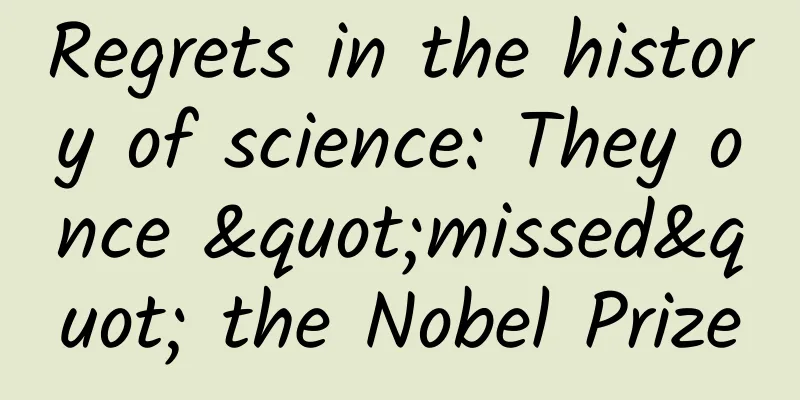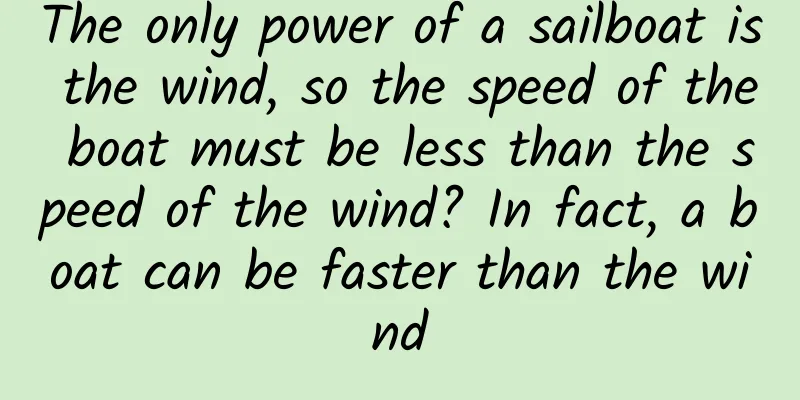Regrets in the history of science: They once "missed" the Nobel Prize

|
Behind a Nobel Prize-winning work, in addition to the great pioneering contributions made by several winners, there are also some scientists who have worked hard on the same research and have won a series of major scientific awards, and have overlapped with Nobel Prize winners in some major awards. However, they ultimately missed the Nobel Prize for one reason or another. According to this standard, since 2000, eleven scientists in the field of life sciences have missed the Nobel Prize. Written by Guo Xiaoqiang The 2023 Nobel Prize in Physiology or Medicine was awarded to Katalin Karikó and Drew Weissman, two scientists who made breakthrough discoveries in mRNA vaccines. Judging from the fact that they have repeatedly won major scientific awards in recent years, this award is well-deserved. It is a bit regrettable that Pieter Cullis, a scientist who also made important contributions to the development of mRNA vaccines, failed to share this achievement. Due to the selection rules of Nobel Prize winners (no more than 3 people share at a time) and their own unique evaluation criteria, there will always be scientists who have done important work but cannot get the favor of the Nobel Prize. Although some of these scientists who missed the Nobel Prize are controversial, some are more generally recognized that their contributions are not enough to rank in the top three. The real purpose of engaging in scientific research is by no means to win the Nobel Prize, but the unique halo effect of the Nobel Prize can make scientists more likely to get public attention. Therefore, understanding those scientists who did not share the Nobel Prize but also made significant contributions is also of great value to promoting scientific development. Since the number of scientists who have not won the Nobel Prize is greater than that of those who have won the prize, three criteria are set here to introduce eleven life scientists who "missed" the Nobel Prize from 2000 to 2023. Selection criteria: (1) The work to which the scientist has contributed has been awarded a Nobel Prize; (2) The scientist has been widely recognized by the scientific community and has won a series of major scientific awards, and has overlapped with Nobel Prize winners in some major awards (i.e., has won the award together); (3) The scientist was still alive when the Nobel Prize was awarded, but did not win the prize. 1. Oleh Hornykiewicz (1926.11.17—2020.5.26), an Austrian biochemist, detected dopamine deficiency in the brains of Parkinson's patients in 1960; in 1961, he used L-dopa to treat Parkinson's patients for the first time and achieved ideal results. Honnechivish | Source: Wolf Prize website Honnechieves related Nobel Prize: 2000 Physiology or Medicine Prize. This year's award was shared by three scientists, Arvid Carlsson, Paul Greengard and Eric R. Kandel, for their "discoveries of signal transduction in the nervous system", of which Carlsson discovered that dopamine acts as a neurotransmitter in the brain and regulates motor ability, providing a theoretical basis for the L-dopa treatment of Parkinson's disease. In 1979, Honnechieves and Carlsson shared the Wolf Prize for Medicine for their contributions to "opening up new ways for L-dopa to control Parkinson's disease". Honnechieves also won the Gairdner International Award (1972) and the Warren Albert Foundation Award (2014), and is known as the "father of modern Parkinson's disease treatment". 2. Yoshio Masui (1931.1.1- ), a Japanese-Canadian cell biologist, made pioneering contributions to cell cycle regulation, especially the discovery of maturation promoting factor (MPF) protein in frog eggs in the 1970s, which deepened our understanding of the cell division process. Masao Masui | Source: Lasker Award website Nobel Prizes related to Masui: 2001 Nobel Prize in Physiology or Medicine . This year's award was shared by three scientists, Leland H. Hartwell, Tim Hunt and Sir Paul M. Nurse, for their "discovery of key regulators of the cell cycle". In 1992, Masui, Hartwell and Nurse shared the Canadian Gairdner International Award for their "contributions to the field of cell cycle regulation"; in 1998, Masui, Hartwell and Nurse further shared the American Lasker Basic Medical Science Award for their "discovery of key regulators of the cell division cycle". 3. Alexander Varshavsky (November 8, 1946-), a Russian-American biochemist, elucidated the molecular mechanism of ubiquitin-mediated protein degradation in the 1980s and discovered that this process plays a key regulatory role in cell growth and division. Varshavsky | Source: Lasker Award website Nobel Prizes related to Varshavsky: Chemistry Prize in 2004. This year's award was shared by three scientists, Aaron Ciechanover, Avram Hershko and Irwin Rose, for their discovery of ubiquitin-mediated protein degradation. In 1999, Varsavsky and Hershko shared the Gairdner International Award for their "discovery of the ubiquitin system for intracellular protein degradation and its numerous functions in the cell"; in 2000, Varsavsky, Ciechanover and Hershko shared the Lasker Basic Medical Sciences Award for their discovery of the "ubiquitin system that regulates protein degradation"; in 2001, Varsavsky and Hershko shared the Wolf Prize in Medicine for their "discovery of the ubiquitin system for intracellular protein degradation and its key functions in cell regulation"; in 2001, Varsavsky and Hershko received the Louisa Gross Horwitz Award from Columbia University in the United States; in addition, in 2014, Varsavsky also won the Breakthrough Prize in Life Sciences and the Albany Medical Center Award. 4. Robert Roeder (June 3, 1942 - ), an American biochemist, identified three eukaryotic RNA polymerases in 1969 and began to identify a variety of eukaryotic transcription factors in the late 1970s, thus promoting the understanding of the transcription mechanism of eukaryotic cells. Rod丨Source: Lasker Award website **Nobel Prize related to Rohde: Chemistry Prize in 2006. **This year's award was given to Roger Kornberg in recognition of his "research on the molecular basis of eukaryotic transcription". In 2000, Rohde and Roger Kornberg shared the Gairdner International Award for their achievements in studying the transcription mechanism and clarifying the basic mechanism of transcription in eukaryotic cells; in 2003, Rohde won the Lasker Basic Medical Award for his discovery of the "protein mechanism of transcription genes"; in addition, Rohde also won the Louisa Gross Horvitz Award (1999) and the Albany Medical Center Award (2012). 5. Robert Gallo (March 23, 1937 - ), an American virologist, identified the human immunodeficiency virus HIV-1 in 1984 and proved that it is the cause of AIDS. Gallo丨Source: Lasker Award website Gallo's Nobel Prize: 2008 Nobel Prize in Physiology or Medicine . Half of this year's award was shared by Françoise Barré-Sinoussi and Luc Montagnier for "their discovery of the human immunodeficiency virus" (German scientist Hausen shared the other half of the medicine award for the discovery of a carcinogenic virus). In 1986, Gallo and Montagnier shared the Lasker Clinical Medical Research Award for "the discovery of HIV-1 as the cause of AIDS"; in 1987, Gallo and Montagnier shared the Gairdner International Award for "the identification and isolation of the virus that causes AIDS"; in addition, in 1982, Gallo won the Lasker Basic Medical Award for "the discovery of the first human RNA tumor virus and its relationship with certain leukemias and lymphomas." 6. Harry Noller (June 10, 1939 - ), an American biochemist, began studying ribosome structural biology in the 1990s. Noler丨Source: Personal homepage Nobel Prizes related to Knoller: Chemistry Prize in 2009. This year's award was given to Venkatraman Ramakrishnan, Thomas Steitz and Ada Yonath for "their research on the structure and function of the ribosome". In 2007, Knoller and Steitz shared the Gairdner International Award for "their research on the structure and function of the ribosome"; in addition, in 2017, Knoller won the Breakthrough Prize in Life Sciences. 7. Ruslan Maksutovich Medzhitov ( March 12, 1966 -), an Uzbek biologist, discovered the first mammalian innate immune receptor TLR-4 in 1997. Medzhitov | Source: Shaw Prize website Medzhitov's Nobel Prize: 2011 Nobel Prize in Physiology or Medicine . Half of this year's award was shared by Bruce Beutler and Jules Hoffmann in recognition of "their discoveries in innate immune activation" (the other half of the award was won by American scientist Ralph Steinman, who sadly passed away three days before the award was announced). In 2011, Medzhitov shared the Shaw Prize in Life Science and Medicine with Bruce Beutler and Jules Hoffmann for "their discoveries of the molecular mechanisms of innate immunity." 8. Richard Scheller (1953.10.30- ), an American neurobiologist, made a series of discoveries in the 1990s that revealed the molecular mechanisms of cellular vesicle transport and neurotransmitter release. Scheller | Source: Lasker Award website Nobel Prizes related to Scheler: 2013 Nobel Prize in Physiology or Medicine . This year's award was given to James Rothman, Randy Schekman and Thomas Südhof for "their discovery of the regulatory mechanism of vesicle transport, the main transport system in cells". In 2013, Scheler and Südhof shared the Lasker Basic Medical Science Award for "the discovery of the molecular mechanism and regulatory mechanism of rapid release of neurotransmitters". 9. Michael Sofia (1958- ), an American chemist, developed the hepatitis C treatment drug sofosbuvir Sofia丨Source: Personal Homepage Sofia's Nobel Prize: 2020 Nobel Prize in Physiology or Medicine . This year's award was given to Harvey Alter, Michael Houghton and Charles Rice for their "discovery of the hepatitis C virus." In 2016, Sofia and Rice shared the Lasker Clinical Medical Research Award for their "hepatitis C virus replication subsystem and drug development." 10. Feng Zhang (1981.10.22— ), a Chinese-American neurobiologist, proved the feasibility of the gene editing system CRISPR-Cas9 in eukaryotic cells in 2012, and subsequently improved and expanded the gene editing system. Zhang Feng | Image source: MIT McGovern Institute for Brain Research website Zhang Feng's Nobel Prize: 2020 Chemistry Prize . This year's award was shared by Emmanuelle Charpentier and Jennifer Doudna in recognition of "the development of a gene editing method". In 2016, Zhang Feng shared the Gairdner International Award with Charpentier, Doudna and others for "the development of CRISPR-CAS as a tool for genome editing in eukaryotic cells"; in 2016, Zhang Feng shared the Albany Medical Center Award with Charpentier, Doudna and others for their contributions to gene editing. 11. Pieter Rutter Cullis (1946- ), a Canadian biochemist, made groundbreaking contributions in the field of lipid nanoparticles, a technology that is crucial for mRNA vaccine delivery. Cullis | Source: Royal Society Kulis's Nobel Prize: 2023 Nobel Prize in Physiology or Medicine . In 2022, Kulis shared the Gairdner International Award with Kaliko and Weissman for their contributions to the basic technology of highly effective COVID-19 mRNA vaccines. The eleven scientists selected in this article have all made important scientific contributions in the field of life sciences and have been recognized to a certain extent by the scientific community, but they were not able to share the Nobel Prize for various reasons. The specific reasons will not be analyzed here, only to increase the public's understanding and knowledge of them. Some scientists gave up halfway or died young, so their achievements not only did not receive the Nobel Prize, but also did not receive general praise from the scientific community, such as Douglas Prasher, who completed the cloning of the green fluorescent protein gene. I will not go into details here. References [1] Ehringer H, Hornykiewicz O. Distribution of noradrenaline and dopamine (3-hydroxytyramine) in the human brain and their behavior in diseases of the extrapyramidal system. Klin Wochenschr. 1960,38:1236-1239. [2] Wasserman WJ, Masui Y. A cytoplasmic factor promoting oocyte maturation: its extraction and preliminary characterization. Science, 1976,191(4233):1266-1268. [3] Bachmair A, Varshavsky A. The degradation signal in a short-lived protein. Cell, 1989, 56(6):1019-1032. [4] Roeder RG , Rutter WJ. Multiple forms of DNA-dependent RNA polymerase in eukaryotic organisms. Nature, 1969, 224(5216):234-237. [5] Popovic M, Sarngadharan MG, Read E, Gallo RC . Detection, isolation, and continuous production of cytopathic retroviruses (HTLV-III) from patients with AIDS and pre-AIDS. Science, 1984, 224(4648):497-500. [6] Takyar S, Hickerson RP, Noller HF . mRNA helicase activity of the ribosome. Cell, 2005, 120(1):49-58. [7] Medzhitov R , Preston-Hurlburt P, Janeway CA Jr. A human homologue of the Drosophila Toll protein signals activation of adaptive immunity. Nature, 1997, 388(6640):394-397. [8] Bennett MK, Calakos N, Scheller RH . Syntaxin: a synaptic protein implicated in docking of synaptic vesicles at presynaptic active zones. Science, 1992,257(5067):255-259. [9] Sofia MJ , Bao D, Chang W, Du J, Nagarathnam D, Rachakonda S, Reddy PG, Ross BS, Wang P, Zhang HR, Bansal S, Espiritu C, Keilman M, Lam AM, Steuer HM, Niu C, Otto MJ, Furman PA. Discovery of a β-d-2'-deoxy-2'-α-fluoro-2'-β-C-methyluridine nucleotide prodrug (PSI-7977) for the treatment of hepatitis C virus. J Med Chem, 2010,53(19):7202-7218. [10] Cong L, Ran FA, Cox D, Lin S, Barretto R, Habib N, Hsu PD, Wu X, Jiang W, Marraffini LA, Zhang F. Multiplex genome engineering using CRISPR/Cas systems. Science, 2013, 339(6121):819-823. [11] Cullis PR , de Kruijff B. Lipid polymorphism and the functional roles of lipids in biological membranes. Biochim Biophys Acta, 1979,559(4):399-420.
Special Tips 1. Go to the "Featured Column" at the bottom of the menu of the "Fanpu" WeChat public account to read a series of popular science articles on different topics. 2. Fanpu provides a function to search articles by month. Follow the official account and reply with the four-digit year + month, such as "1903", to get the article index for March 2019, and so on. Copyright statement: Personal forwarding is welcome. Any form of media or organization is not allowed to reprint or excerpt without authorization. For reprint authorization, please contact the backstage of the "Fanpu" WeChat public account. |
>>: The dishwashing tool we used as children can also power LEDs? | Expo Daily
Recommend
China Automobile Dealers Association: Pickup Truck Market Analysis in September 2020
According to data from the Automobile Market Rese...
Internet TV TV Double Star Edition v1.5 Massive channels, green software download
Software Information Name: Internet TV_Double Sta...
6 tips to quickly improve UI design effects
Editor's note: When doing UI design, many tip...
One case of a mutant strain that is of particular concern has been discovered in the country. Is the second round of the epidemic about to begin quietly?
Recently, the Chinese Center for Disease Control ...
How much does it cost for a Yanbian merchant to create a homestay mini app?
The launch of mini programs has brought convenien...
Official first revelation: Does a bracelet tied to a dog count as WeChat steps?
Since WeChat launched the walking rankings, many f...
How to position your personality in short videos?
We have seen that many popular short video accoun...
What are the advantages of mobile high-bandwidth servers?
What are the advantages of mobile high bandwidth ...
The Secret of the Deep Sea Castle: Human, where do you come from?
Some mysteries may never be solved. By Amanda Hei...
After this fall, iTunes may no longer exist.
iTunes has never been a good tool, and after year...
Have you received any orders from Baidu AiPurchasing? Is Baidu Ai Purchasing effective?
Since its launch, Baidu Ai Procurement products h...
Daily Youxian event traffic generation tips!
In the past, when we went to the supermarket to b...
New Media Operation丨How to operate self-media platforms such as Toutiao and Baijiahao?
Today I will share with you how to become a novic...
How can a product achieve user growth? Share 3 points!
In the current environment of accelerated develop...
Talk about four kinds of App product designs that will never die if you don’t do it
[[120114]] 1. Superfluous products This kind of p...









